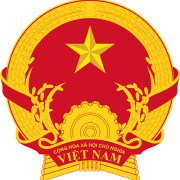
According to a recent project announced by the Hanoi Municipal People’s Committee, Hanoi will officially launch a book street on December 19 Street, Hoan Kiem, bringing promising news for book lovers. In addition to book stores and unmanned stalls showcasing books on the pavement of crowded streets as well as Dinh Le Street – a popular address for readers, the upcoming permanent book street on December 19 Street is promised to become a new cultural address hosting a wide range of interesting activities for book lovers.
However, after the project was announced, many people expressed concern that the launch of the book street is unnecessary and will not be attractive to the public as for many years, Dinh Le Street has been automatically considered as Hanoi’s official “book street” or “book centre” by those who enjoy reading as the street houses many stalls showcasing assorted book titles from various publishers across the country.
The argument would be unreasonable if a book street was only a place for book shopping, which could also be done at book stores in the city or via orders made online. However, a book street will not only be a place for purchasing books, it will also help to promote a love of reading in society.
Observing the excitement of buyers at book streets, one can notice that book lovers also tend to take part in practical activities which honour reading culture, connect readers and books, and increase interaction among publishers, authors and readers. A true book street can help address high demand.
According to Nguyen Minh Nhut, Director of Tre (Youth) Publishing House, book streets can help publishers map out orientations for book publishing over the next 20 or even 30 years, thereby contributing to raising intellectual standards of the people.
Previously, a book street with a similar operational model was set up on Nguyen Van Binh Street in Ho Chi Minh City in January, 2016. At that time, the question was raised on whether the book street would become a market for book buying and selling like Dinh Le Street in Hanoi or Dang Thi Nhu Street in Ho Chi Minh City, which was once operational during the 1980s.
The location for the book street has received much attention from the management board. In Ho Chi Minh City, Nguyen Van Binh Street was evaluated as the most favourable location since it is in the city’s downtown, which allows it to connect with cultural constructions such as Ho Chi Minh City Central Post Office, the Independence Palace and Dan Chu Roundabout; the street is also favourable as it is quiet with lots of greenery. In Hanoi, December 19 Street is also near the city centre as well as cultural sites including Hoan Kiem Lake, Hanoi Opera House, the Temple of Literature and Thong Nhat Park.
The street is expected to become a cultural venue to consolidate the publishing sector and provide a source of knowledge for book lovers. Twenty booths on the street were strictly selected based on detailed criteria: they must be owned by prestigious publishing houses which can provide readers with high-quality publications, are capable of hosting events to introduce new books and authors as well as exchanges; staff working in the booths must demonstrate good behaviour; participating businesses must be abide by regulations set by the management board.
The operation of the book street has shown efficiency and it has received much appreciation from the public. Visitors to the street can not only buy a book that they are interested in but also share their love for books with others, meet their favourite authors and enjoy arts performances. They can also stop and take a rest under a tree while reading their newly-bought book amid the tranquil atmosphere of the street.
In addition to booths showcasing books on a wide range of topics from politics, society, science and technology, foreign languages, literature, economics and life skills, the street also includes cafeteria spaces, places for exchanging old books, and monthly exhibitions on specific themes and an entertainment space for children. That is why many city dwellers decide to visit the street during the weekend.
The organisers have also kept their promise which they made before the street was put into operation: exchanges and meetings between readers and authors as well as cultural activities have been held weekly and monthly, helping to attract more and more visitors to the street space.
A Facebook fan page ‘Duong Sach Sai Gon’ was also launched to update the list of events to be held on the street for the upcoming month with detailed information so that visitors can arrange their time to attend the events.
After six months of operation, the book street has welcomed over 500,000 visitors with more than 240,000 copies of books being sold, generating VND 15 billion (US$700,000). Over 50 events have been held on the street during that time.
The effective operation of Nguyen Van Binh book street in Ho Chi Minh City has brought about experiences for the management board of the December 19 book street in Hanoi. It is one thing to launch a book street, but to maintain and develop it is even more difficult. It requires a decisive management board to make professional planning, and ensure quality, diversity and frequency in organising events. By doing this, the book street will contribute to raising intellectual standards of the people and cultivate a reading culture in the community.
